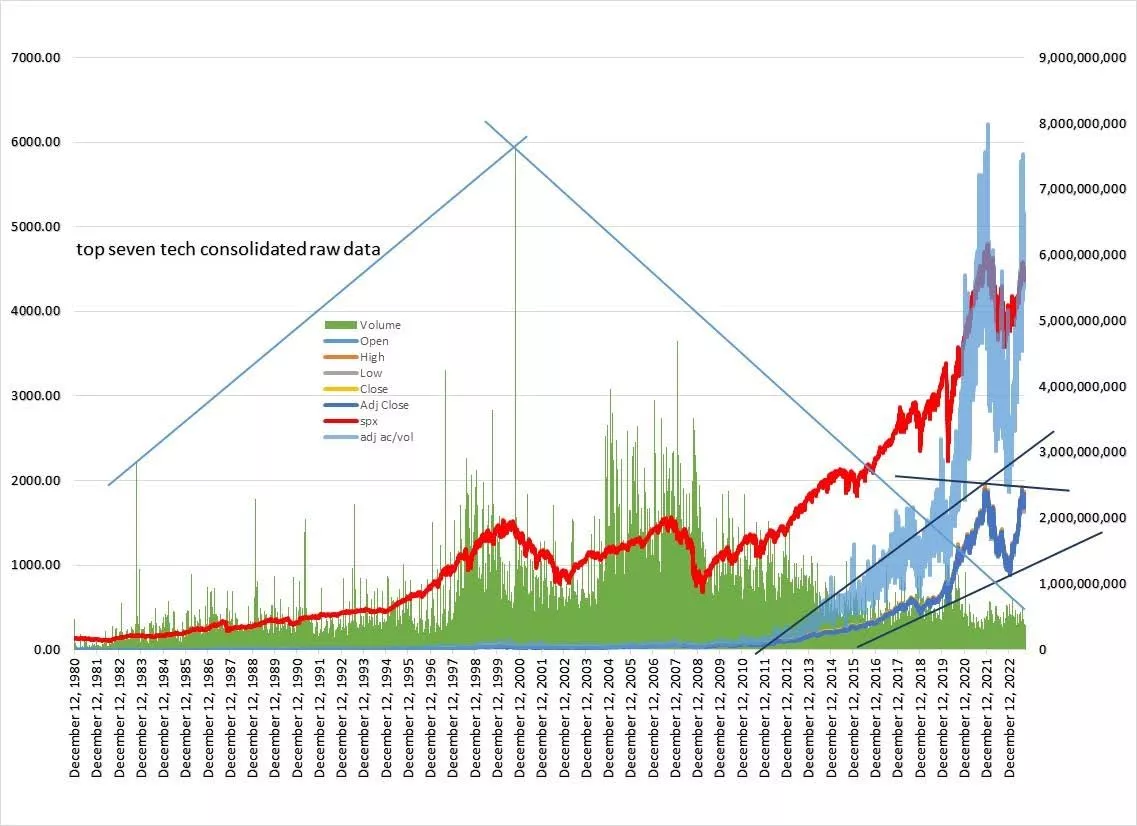GOP Performance In 2024 Election May Be As Bad As McGovern’s And Goldwater’s

Image Source: Pexels
I have conducted electoral college studies based on aspects of my proprietary RLH Volatility Model since 1996. The basis of these studies has been that polls are unreliable and increasingly so since landlines have largely given way to portable smart devices and assembling databases for polling and adjusting them according to accurate estimates of party, ideology, and turnout probability become ever more fluid.
This year is an extremely significant year insofar as it highlights the attaining of “critical mass” and long-term cycle culmination of some of the hotter button issues ever crystallizing a national election.
- The Republican party has now completed its transition from the old-line guard of the Doles, Bushes, McCains, Romneys, and Bushes, becoming a populist party. The absence of the old country club element displaced by the more recent populist element means less “sophistocracy,” less money, less “juice” and more vulgarity. But what it really means is that any standard bearer for that party is not only fighting the democrat nominee, he is also fighting an angry faction within his own party that has been kicked out and wants back. This is somewhat reminiscent of Mr. Han’s comment on Dre’s predicament: “One against one, fair fight: six against one, no one can do.”
- As a subset of the above, Nikki Haley is two things wrapped up in one. She is the incarnation of whatever quantity of republican women want to make sure there is a legal way to get an abortion. Iowa brought this to light in that however small that number may be, if it is large enough to be a critical variable, that’s what matters. Some studies indicate that Haley supporters are more likely to vote Democrat in general if Haley isn’t the nominee. Emphasis on this point is exacerbated by the fact that the caucuses in Iowa revealed that that state’s trump delegates are predominantly activists in aiming for Iowa statute that would enforce strict abortion limitations.
- These two points having been said, Nikki Haley is simultaneously a pathway for the ejected old guard to find their way back. That’s why she is still in and Ron DeSantis is out.
- There are four states of overarching importance. They are California, Texas, Florida, and New York.It is possible for democrats to get all four.It is possible for republicans to get Florida and Texas. It is only possible for Republicans to win nationally if they get both Florida and Texas but it is possible for Democrats to win even if they lose Florida and Texas.
Here are the electoral college and popular results for 2020, isolating the major candidates:
|
Democratic |
Republican |
|||||
|
|
Votes |
% |
EV |
Votes |
% |
EV |
|
849,624 |
36.57% |
– |
1,441,170 |
62.03% |
9 |
|
|
153,778 |
42.77% |
– |
189,951 |
52.83% |
3 |
|
|
1,672,143 |
49.36% |
11 |
1,661,686 |
49.06% |
– |
|
|
423,932 |
34.78% |
– |
760,647 |
62.40% |
6 |
|
|
11,110,639 |
63.48% |
55 |
6,006,518 |
34.32% |
– |
|
|
1,804,352 |
55.40% |
9 |
1,364,607 |
41.90% |
– |
|
|
1,080,831 |
59.26% |
7 |
714,717 |
39.19% |
– |
|
|
296,268 |
58.74% |
3 |
200,603 |
39.77% |
– |
|
|
317,323 |
92.15% |
3 |
18,586 |
5.40% |
– |
|
|
5,297,045 |
47.86% |
– |
5,668,731 |
51.22% |
29 |
|
|
2,473,633 |
49.47% |
16 |
2,461,854 |
49.24% |
– |
|
|
366,130 |
63.73% |
4 |
196,864 |
34.27% |
– |
|
|
287,021 |
33.07% |
– |
554,119 |
63.84% |
4 |
|
|
3,471,915 |
57.54% |
20 |
2,446,891 |
40.55% |
– |
|
|
1,242,498 |
40.96% |
– |
1,729,857 |
57.03% |
11 |
|
|
759,061 |
44.89% |
– |
897,672 |
53.09% |
6 |
|
|
570,323 |
41.51% |
– |
771,406 |
56.14% |
6 |
|
|
772,474 |
36.15% |
– |
1,326,646 |
62.09% |
8 |
|
|
856,034 |
39.85% |
– |
1,255,776 |
58.46% |
8 |
|
|
435,072 |
53.09% |
2 |
360,737 |
44.02% |
– |
|
|
266,376 |
60.11% |
1 |
164,045 |
37.02% |
– |
|
|
168,696 |
44.82% |
– |
196,692 |
52.26% |
1 |
|
|
1,985,023 |
65.36% |
10 |
976,414 |
32.15% |
– |
|
|
2,382,202 |
65.60% |
11 |
1,167,202 |
32.14% |
– |
|
|
2,804,040 |
50.62% |
16 |
2,649,852 |
47.84% |
– |
|
|
1,717,077 |
52.40% |
10 |
1,484,065 |
45.28% |
– |
|
|
539,398 |
41.06% |
– |
756,764 |
57.60% |
6 |
|
|
1,253,014 |
41.41% |
– |
1,718,736 |
56.80% |
10 |
|
|
244,786 |
40.55% |
– |
343,602 |
56.92% |
3 |
|
|
374,583 |
39.17% |
– |
556,846 |
58.22% |
2 |
|
|
132,261 |
41.09% |
– |
180,290 |
56.01% |
1 |
|
|
176,468 |
51.95% |
1 |
154,377 |
45.45% |
– |
|
|
65,854 |
22.34% |
– |
222,179 |
75.36% |
1 |
|
|
Nev.[q] |
703,486 |
50.06% |
6 |
669,890 |
47.67% |
– |
|
424,937 |
52.71% |
4 |
365,660 |
45.36% |
– |
|
|
N.J.[r] |
2,608,400 |
57.33% |
14 |
1,883,313 |
41.40% |
– |
|
501,614 |
54.29% |
5 |
401,894 |
43.50% |
– |
|
|
5,244,886 |
60.87% |
29 |
3,251,997 |
37.74% |
– |
|
|
2,684,292 |
48.59% |
– |
2,758,775 |
49.93% |
15 |
|
|
115,042 |
31.78% |
– |
235,751 |
65.12% |
3 |
|
|
2,679,165 |
45.24% |
– |
3,154,834 |
53.27% |
18 |
|
|
503,890 |
32.29% |
– |
1,020,280 |
65.37% |
7 |
|
|
1,340,383 |
56.45% |
7 |
958,448 |
40.37% |
– |
|
|
3,458,229 |
50.02% |
20 |
3,377,674 |
48.69% |
– |
|
|
307,486 |
59.39% |
4 |
199,922 |
38.61% |
– |
|
|
1,091,541 |
43.43% |
– |
1,385,103 |
55.11% |
9 |
|
|
150,471 |
35.61% |
– |
261,043 |
61.77% |
3 |
|
|
1,143,711 |
37.45% |
– |
1,852,475 |
60.66% |
11 |
|
|
Texas[s] |
5,259,126 |
46.48% |
– |
5,890,347 |
52.06% |
38 |
|
560,282 |
37.65% |
– |
865,140 |
58.13% |
6 |
|
|
242,820 |
66.09% |
3 |
112,704 |
30.67% |
– |
|
|
2,413,568 |
54.11% |
13 |
1,962,430 |
44.00% |
– |
|
|
2,369,612 |
57.97% |
12 |
1,584,651 |
38.77% |
– |
|
|
235,984 |
29.69% |
– |
545,382 |
68.62% |
5 |
|
|
1,630,866 |
49.45% |
10 |
1,610,184 |
48.82% |
– |
|
|
73,491 |
26.55% |
– |
193,559 |
69.94% |
3 |
|
|
Total |
81,283,501 |
51.31% |
306 |
74,223,975 |
46.85% |
232 |
Here is my forecast for 2024:
|
dem nominee |
repub nominee |
|||||||||
|
Votes |
% |
EV |
Votes |
% |
EV |
|||||
|
Alab. |
919,718 |
41.02% |
1,322,273 |
58.98% |
9 |
|||||
|
Alaska |
166,465 |
48.85% |
174,280 |
51.15% |
3 |
|||||
|
Arizona |
1,810,095 |
54.28% |
11 |
1,524,597 |
45.72% |
|||||
|
Ark. |
458,906 |
39.67% |
697,894 |
60.33% |
6 |
|||||
|
Calif. |
12,027,267 |
68.58% |
55 |
5,510,980 |
31.42% |
|||||
|
Colo. |
1,953,211 |
60.94% |
9 |
1,252,027 |
39.06% |
|||||
|
Conn. |
1,170,000 |
64.08% |
7 |
655,753 |
35.92% |
|||||
|
D.C. |
343,502 |
95.27% |
3 |
17,053 |
4.73% |
|||||
|
Del. |
320,710 |
63.54% |
3 |
184,053 |
36.46% |
|||||
|
Florida |
5,734,051 |
52.44% |
29 |
|
5,201,061 |
47.56% |
|
Dem pickup |
29 |
437,006 |
|
Georgia |
2,677,708 |
54.24% |
16 |
2,258,751 |
45.76% |
|||||
|
Hawaii |
396,336 |
68.69% |
4 |
180,623 |
31.31% |
|||||
|
Idaho |
310,700 |
37.93% |
508,404 |
62.07% |
4 |
|||||
|
Illinois |
3,758,348 |
62.60% |
20 |
2,245,022 |
37.40% |
|||||
|
Indiana |
1,345,004 |
45.87% |
1,587,144 |
54.13% |
11 |
|||||
|
Iowa |
821,684 |
49.94% |
823,614 |
50.06% |
6 |
|||||
|
Kansas |
617,375 |
46.59% |
707,765 |
53.41% |
6 |
|||||
|
Ky. |
836,203 |
40.72% |
1,217,198 |
59.28% |
8 |
|||||
|
La. |
926,657 |
44.58% |
1,152,174 |
55.42% |
8 |
|||||
|
Maine † |
470,965 |
58.73% |
2 |
330,976 |
41.27% |
|||||
|
Mass. |
2,578,734 |
70.66% |
11 |
1,070,908 |
29.34% |
|||||
|
Md. |
2,148,787 |
70.58% |
10 |
895,860 |
29.42% |
|||||
|
ME-1 |
288,352 |
65.70% |
1 |
150,511 |
34.30% |
|||||
|
ME-2 |
182,613 |
50.30% |
1 |
|
180,465 |
49.70% |
|
Dem pickup |
1 |
13,917 |
|
Mich. |
3,035,373 |
55.53% |
16 |
2,431,239 |
44.47% |
|||||
|
Minn. |
1,858,736 |
57.72% |
10 |
1,361,630 |
42.28% |
|||||
|
Miss. |
583,898 |
45.68% |
694,331 |
54.32% |
6 |
|||||
|
Mo. |
1,356,388 |
46.24% |
1,576,940 |
53.76% |
10 |
|||||
|
Mont. |
264,981 |
45.67% |
315,255 |
54.33% |
3 |
|||||
|
N.C. |
2,905,746 |
53.44% |
15 |
|
2,531,176 |
46.56% |
|
Dem pickup |
15 |
221,454 |
|
N.D. |
124,533 |
36.54% |
216,302 |
63.46% |
3 |
|||||
|
N.H. |
459,994 |
57.83% |
4 |
335,493 |
42.17% |
|||||
|
N.J.[r] |
2,823,593 |
62.04% |
14 |
1,727,940 |
37.96% |
|||||
|
N.M. |
542,997 |
59.56% |
5 |
368,738 |
40.44% |
|||||
|
N.Y. |
5,677,589 |
65.55% |
29 |
2,983,707 |
34.45% |
|||||
|
NE-1 |
143,173 |
46.40% |
165,416 |
53.60% |
1 |
|||||
|
NE-2 |
191,027 |
57.42% |
1 |
141,641 |
42.58% |
|||||
|
NE-3 |
71,287 |
25.91% |
203,849 |
74.09% |
1 |
|||||
|
Neb. † |
405,486 |
44.25% |
510,906 |
55.75% |
2 |
|||||
|
Nev.[q] |
761,524 |
55.34% |
6 |
614,624 |
44.66% |
|||||
|
Ohio |
2,900,196 |
50.05% |
18 |
|
2,894,560 |
49.95% |
|
Dem pickup |
18 |
221,031 |
|
Okla. |
545,461 |
36.82% |
936,107 |
63.18% |
7 |
|||||
|
Oregon |
1,450,965 |
62.26% |
7 |
879,376 |
37.74% |
|||||
|
Pa. |
3,743,533 |
54.71% |
20 |
3,099,016 |
45.29% |
|||||
|
R.I. |
332,854 |
64.47% |
4 |
183,428 |
35.53% |
|||||
|
S.C. |
1,181,593 |
48.18% |
1,270,832 |
51.82% |
9 |
|||||
|
S.D. |
162,885 |
40.48% |
239,507 |
59.52% |
3 |
|||||
|
Tenn. |
1,238,067 |
42.14% |
1,699,646 |
57.86% |
11 |
|||||
|
Texas[s] |
5,693,004 |
51.30% |
38 |
|
5,404,393 |
48.70% |
|
Dem pickup |
38 |
433,878 |
|
Utah |
606,505 |
43.31% |
793,766 |
56.69% |
6 |
|||||
|
Va. |
2,612,687 |
59.20% |
13 |
1,800,530 |
40.80% |
|||||
|
Vt. |
262,853 |
71.77% |
3 |
103,406 |
28.23% |
|||||
|
W.Va. |
255,453 |
33.80% |
500,388 |
66.20% |
5 |
|||||
|
Wash. |
2,565,105 |
63.82% |
12 |
1,453,917 |
36.18% |
|||||
|
Wis. |
1,765,412 |
54.44% |
10 |
1,477,344 |
45.56% |
|||||
|
Wyo. |
79,554 |
30.94% |
177,590 |
69.06% |
3 |
|||||
|
Total |
88,865,841 |
56.31% |
407 |
|
68,942,379 |
43.69% |
131 |
Dem pickup |
101 |
1,327,287 |
|
57.69% |
Here is Pew Research abortion data for the Dem pickup states:
|
Florida |
|
|
|
|
56% |
Legal in all/most cases |
|
|
|
39% |
Illegal in all/most cases |
|
|
|
5% |
Don't know |
|
|
|
2,020 |
|
Sample size |
|
|
Maine |
|
|
|
|
64% |
Legal in all/most cases |
|
|
|
33% |
Illegal in all/most cases |
|
|
|
3% |
Don't know |
|
|
|
303 |
|
Sample size |
|
|
North Carolina |
|
|
|
|
49% |
Legal in all/most cases |
|
|
|
45% |
Illegal in all/most cases |
|
|
|
6% |
Don't know |
|
|
|
1,022 |
|
Sample size |
|
|
Ohio |
|
|
|
|
48% |
Legal in all/most cases |
|
|
|
47% |
Illegal in all/most cases |
|
|
|
4% |
Don't know |
|
|
|
1,132 |
|
Sample size |
|
|
Texas |
|
|
|
|
45% |
|
Legal in all/most cases |
|
|
50% |
|
Illegal in all/most cases |
|
|
4% |
Don't know |
|
|
|
2,535 |
|
Sample size |
|
Sample sizes and margins of error vary from subgroup to subgroup, from year to year and from state to state.
ABOUT PEW RESEARCH CENTER Pew Research Center is a nonpartisan fact tank. It conducts public opinion polling, demographic research, media content analysis and other empirical social science research.
[Copyright 2023 Pew Research Center]
Market/Business/Economic Implications
In my introductory remarks, I referred to long-term cycles that are now culminating but did not specify that I was speaking largely in terms of political cycles. At the same time this is happening, the long cycles are also culminating more broadly in the markets. As one example, we have been in a sustained equity rally that has even recovered COVID losses since early 2009. That’s 15 years.
It is generally assumed that presidential election years are bullish but this time we are coming off very large gains in 2023 depending on which index you choose; for example, Nasdaq 100 stocks are up for 2023 more than 40%. Then again, these gains do not represent strong breadth but are instead largely confined (in terms of their index influence) to the so-called “magnificent seven” chip and other issues associated with large language dataset artificial intelligence models pricing in substantial multiples—especially chip stocks. Also, as many have pointed out, the gains of 2023 were really just recoveries of covid losses rather than incremental.
Here is a graphic depiction:
(Click on image to enlarge)

The ultra-huge performance of this group and its outsized impact on averages is both worrisome in its own right as well as indicative of extensive breadth divergence by sector, and, on top of that, is powered even further by expectations of several rate cuts during the year that may never occur if inflation rate decreases do not bring results into the 2% policy target range (or even reverse).
Bond market rates are also problematic in terms of what kind of pricing will be required to market an expected prolongation of “continuing spending resolutions” and the nasty habit of $2 trillion per year in US government deficit spending.
Another consequence of these dynamics is whether markets will continue to regard, in light of these factors, US Treasurys as the “risk free alternative.”
Divergences of this magnitude and occurrence can resolve to the downside in a major way.
More By This Author:
The (Alarm) Bells Are Ringing For Me And My GalAre We In A Good Place?
Crosscurrents, Shocks, Surprises, Murkiness, Confusion And So On




Quite interesting. Thank you.
I don’t know, bro. A lot of uneducated, delusional nut jobs out there who still think an ex-president won an election—despite not providing one single legit bit of evidence that he won.


Trump won in 2016, 2020, and will win again in 2024. No matter what tricks people play.